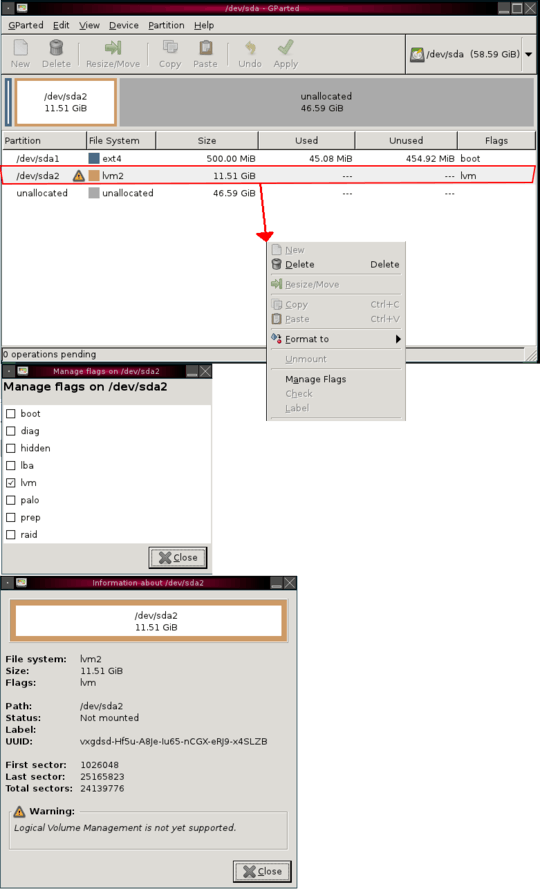13
6
In a nutshell, i have a VM that ran out of space. I increased the size of the VM's harddrive to be 4 times bigger but the OS partition is still only using 1x the space. I need to change the LVM partition to take up the extra 4x space but I don't know how to extend the LVM partition.
(NOTE: To make the screenshots given below I had to boot from a live-cd for gnome-partition-manager (aka gparted). Very unfortunately gparted is only able to "detect LVM" and can't do any LVM operations.)
Here is what "gparted" shows. Please notice that the "resize" option is not available:

The Problem:
I can't find good directions<1> on how to grow the LVM partition via GUI or command-line! How do you grow a LVM partition that was created by the default Fedora install?
If you are giving command line directions. Please explain what each line of commands does.
1Anyone who does a default fedora install has this partition setup, I'm surprised no one else has run into this problem... fedora has such a large install base of users. – Trevor Boyd Smith – 2011-09-14T14:15:04.587
Update: I marked one of the answers as correct. I was unable to verify that the answer marked as correct worked on my VM... the process was to complex for me to get working. – Trevor Boyd Smith – 2013-01-08T20:57:05.527
Update: I ended up backing up data. Creating a new VM from scratch and restoring the data. – Trevor Boyd Smith – 2013-01-08T20:57:27.603